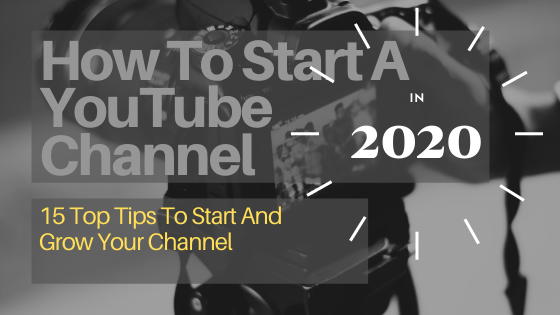How To Start an Online Business
Why Do You Want to Start an Online Business?
Let’s start with your why. Why do you want learn how to start an online business?
Here are some typical reasons:
- You are stuck in job that doesn’t fulfill or motivate you.
- You are living from paycheck to paycheck just to pay the bills and are looking for a way out.
- You are trying to build a recurring income that will continue if you lose your job or retire.
- You want more freedom to live where you want to and have more freedom to choose when you work.
- You believe that you have something, a skill or knowledge, that you want to share to help others.
These are the more popular reasons why people want to start an online business.
I am making the assumption that you are trying to set it up alongside your current full-time job, while you build up enough income.
This is pretty typical.
Maybe you just aren’t cut out for a 9-5 career and are looking for an alternative that doesn’t require a huge investment.
It is also possible that you are out of work and exploring different options to earn money. Many online entrepreneurs started their business when their plan A career didn’t quite work out. Most of them now look back on this as the best thing that could have happened to them.
What Should You Do First
The first thing you need to do is choose what your online business is going to focus on; your niche.
This is not something I am going to go deep into here. It is just too big a topic. Instead, I have some useful links at the end of the article if this is something you need help with.
Here, I am going to cover the basic building blocks for your online business. What you need to put in place, regardless of your chosen niche.
So let me explain what I am going to cover.
1: What resources you are going to need.
2: Your platform – where will your traffic come from – YouTube, Social Media, A Podcast, SEO, Paid Advertising.
3: The first few steps you go through to start building your email list.
When I first began planning and building my online marketing business, the thing I struggled most with was understanding what I needed to put in place before I launched my business.
First impressions are important, so you can’t go to your audience with broken links, unfinished articles or a website that looks like your dog designed it.
However, you also don’t want to spend a fortune on expensive Web designers on day one.
I made a number of mistakes at this stage, changed direction a few times and spent far too much time fiddling with widgets and spacing in WordPress. I have some advice which should avoid you making the same mistakes.
Now some people will tell you that all you need is a good landing or sales page and you are on your way.
Others will say just write a blog article that ranks well in Google.
Whilst this is true in isolation, there is much more that is required to build a repeatable business and a regular income.
Another common issue is trying to do everything from day one. Facebook ads, backlink strategies, YouTube videos, podcasting, the list goes on. It is easy to get overwhelmed and end up getting nowhere. Yes, I have been there as well.
Planning Out What You Need
Start by mapping out what you need in place as a minimum for the business to really function. Think of it as a kind of jigsaw puzzle where you need all the pieces or you won’t get the right result. It doesn’t have 1,000 pieces, but it does need to be completed. You don’t want to have a form on your landing page that isn’t linked to a workflow or sequence in your email autoresponder. (Dont worry if you don’t know what a workflow sequence or email autoresponder is; all will be revealed.)
I believe that this is the case whatever niche you are in. It can also apply as much to a small business that is trying to build a web presence as it does to a budding online entrepreneur or blogger just starting out.
Here are some of the key things you need to have in place.
- Hosting provider or web content platform
- Domain name
- Theme for your blog or website (if you are using WordPress)
- Content pages – the basic content on your blog or website.
- Navigation on your site – menus that link to the various sections.
- Forms to sign up for your email list.
If you are looking to monetize your blog or website you also need:
- Affiliate links
- Offers
- Landing pages
- Email autoresponder with emails written.
- Methods for taking payment or at least a PayPal account.
Putting all this together takes time and you may choose to offload some of this to a 3rd party to put together, but you still need to know what you need.
So let’s break it down into steps.
Step 1: The Foundation for your Online Business
I don’t believe you can successfully operate an online business without a website or blog. This is the place where people come to see what you have on offer and learn about you and your business.
You can certainly set up landing pages and social media content outside of your site, but everything should bring people back to your site or blog at some point, if possible. It is the base for your online business.
I have explored using Landing Pages instead of web pages and believe they can actually make things easier if used correctly. That is discussed more in Part 2.
Here are the components you need for step 1:
- Domain Name
- Hosting Provider or web content platform
- WordPress Framework and Theme
Hopefully, you have decided on what your business niche is and have a name for your business. If you haven’t I recommend you purchase a copy of “Will it Fly” by Pat Flynn from Smart Passive Income. This will take you step by step through choosing your niche.
I was part of the Founder’s group for Pat’s “Smart From Scratch” Course, which takes you step by step through selecting and testing a niche. Pat has recently launched this course to the public and I recommend you sign up for the next session if you are still deciding on your niche or are unsure about the viability of the niche you have chosen.
I would also like to point out that I went in a number of different directions whilst choosing my niche and my business model is constantly evolving. Whilst it is important to choose your niche early and stick to it, you can start with a narrow topic and build on it over time if you prefer. Don’t be afraid to pivot and take a different direction if you find your first niche isn’t working for you.
Choosing a Domain Name


One of the first things I recommend you do is choose a domain name. This is quite important as it can tell people a lot about your business.
If you are trying to build a personal brand, it may be just your name. People with common names may not have this option or they may have to use their name as part of a longer domain name.
A good example is Jeff Goins, who uses www.goinswriter.com This still works because it tells people that he is a writer.
If you are like me, you can choose a name that reflects the focus of your business. One of my aims is to develop a business where I can earn recurring passive income, even while I am asleep, hence the name www.silentearning.com.
This also tells people, who visit my site that they can potentially learn how to do the same. I say potentially because I am still learning as I grow my business and am documenting my progress so others can learn from my successes and failures.
Either way, you need to find and purchase a domain name. If you are looking for inspiration, I recommend www.Hover.com. Here you can put in the name you want or a keyword that represents your business and it will come up with some suggestions from those that are still available. I would recommend getting a .com domain if you can and avoid hyphens or words that can easily be misspelled, which could lose you traffic. It’s not essential. I recently purchased “nigelwright.net”, because the .com option was taken.
A quick note – before you rush out and buy your domain, check that it isn’t bundled in with your hosting platform.
Choosing a Web Hosting Platform
If you know what your domain name is, you are ready to choose your platform and hosting provider.
The first thing to decide is whether you are building a website or a blog. A website is fairly static and provides information about your company and products. This is typically the route an established business will take.
Website Creation Software
If you are looking for an easy to use Website platform that needs minimal design skills, I suggest you look at www.Wix.com. When I took over the design of my company’s website, I initially used Wix. It is really easy to use, with a host of ready-made themes that help you create a great looking site.
Another option, that is also easy to use is Www.squarespace.com. I used it as a platform to redesign my company’s site a couple of years ago when we wanted to move away from using a programmer. Squarespace has a slightly steeper learning curve than Wix, but can be used to create a larger, more complex site. Both platforms are ideal for small businesses who don’t want to rely on a programmer to set up and maintain their website.
Whichever platform you use, I recommend you get an expert to put the basic design together. For example, we used a designer with Squarespace skills. From there, use someone from within your company to add the content.
Blog Platform – WordPress
A Blog is an alternative to a full-blown website. In some cases, you may have both. A Blog is really the best option for a new business, especially one that is primarily doing business online. A blog is much more dynamic in terms of content. It can also act as a hub where you can connect things like landing pages and email autoresponders.
If you are setting up your own online business or blog, I actually recommend using WordPress.org. It is worth mentioning why I use and recommend WordPress. Quite simply it is the industry standard platform that is used by the majority of bloggers and online marketers. It has excellent SEO tools and a whole host of plugins and themes to help you to make your site look wonderful and integrate with any third party tools.
Specifically, I am referring to WordPress.org. There is also the hosted version, WordPress.com. I would avoid this because it doesn’t offer anywhere near the flexibility or features of a WordPress.org site.
In order to run a WordPress.org site, you need a hosting provider. This is the company that provides the compute resources on which your site will run, so you need a reliable provider.
I personally recommend Siteground as a WordPress hosting provider. They provide consistently reliable service and performance at a competitive price. The setup process is also simple with a number of online tutorials available. They also have excellent support through online chat, which has got me out of many a tangle.
They also offer a simple WordPress install which means you will be ready to go quickly and easily.
I also use Hostgator on some of my older sites. Hostgator.offers a similar range of startup packages to Siteground and have excellent performance, but I do find their management interface a bit complicated.
I suggest you take a look at both providers and see which package works best for you.
Choosing a WordPress Theme for Your Blog
Once you have your domain name and hosting provider, you then need to choose a WordPress theme. This affects how your website or blog will look and how easy it is to change that look. It will also affect things like search engine optimization (SEO)
This is quite an important step and I have to admit that I went down several blind alleys getting this part right. It is very easy to choose a theme that has poor SEO capabilities or is difficult to customize, and you can spend hours trying to get your site looking like you want it to.
The Theme Framework
One thing I do recommend is going with a framework based theme. It has two components: the framework and the child theme. The framework is the back end engine which handles all the SEO and functionality of your site. Genesis from Studiopress is a theme framework I recommend you check out.
Child Themes
The child theme is what sits on the framework, to give the look-and-feel to the site and there are literally hundreds to choose from. The big advantage here is that you can change out your child theme if you want a new look, but the framework stays in place.
Here is an article that provides more information on Studiopress themes: Introducing StudioPress Sites: WordPress Made Easy … Without Sacrificing Power or Flexibility
I chose the Aspire Pro child theme as it fitted well with my needs. StudioPress puts together a comprehensive theme setup guide that takes you through how you can customize the front page to get the look and functionality you want. You will see from my site that I have used a similar look and feel and also shared a lot of the demo theme navigation ideas. It is easy to change the color scheme to match your branding.
Part 1 Result: You now have your domain name and have your site or blog hosted online. You have chosen a theme and you are ready to start adding content.
Resources
Studiopress Themes for WordPress
Full disclosure, these are affiliate links. I will earn a commission if you purchase or signup for any of these products or services. It doesn’t add anything to your cost.








